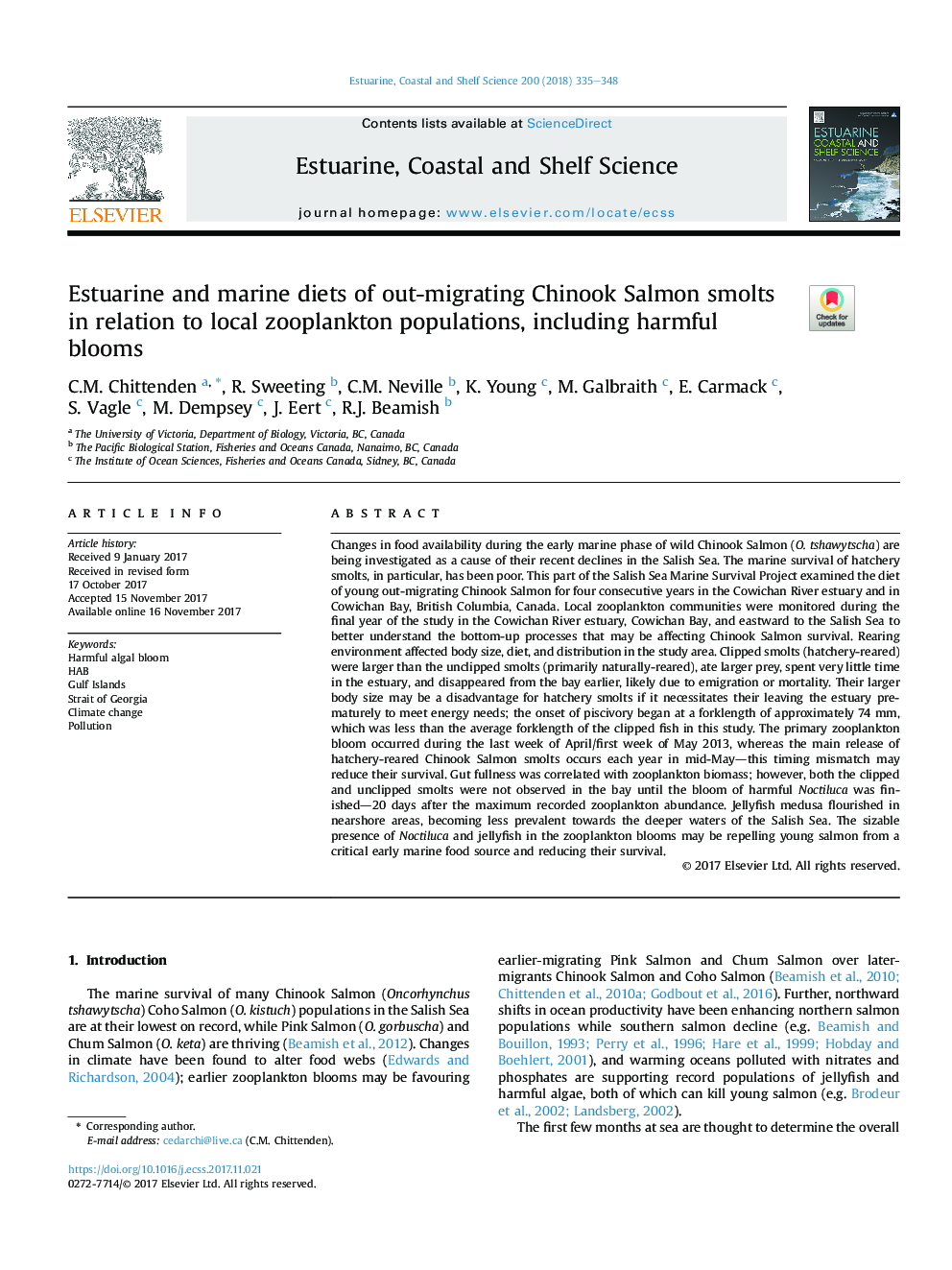| کد مقاله | کد نشریه | سال انتشار | مقاله انگلیسی | نسخه تمام متن |
|---|---|---|---|---|
| 8885125 | 1626602 | 2018 | 14 صفحه PDF | دانلود رایگان |
عنوان انگلیسی مقاله ISI
Estuarine and marine diets of out-migrating Chinook Salmon smolts in relation to local zooplankton populations, including harmful blooms
دانلود مقاله + سفارش ترجمه
دانلود مقاله ISI انگلیسی
رایگان برای ایرانیان
کلمات کلیدی
موضوعات مرتبط
مهندسی و علوم پایه
علوم زمین و سیارات
زمین شناسی
پیش نمایش صفحه اول مقاله

چکیده انگلیسی
Changes in food availability during the early marine phase of wild Chinook Salmon (O. tshawytscha) are being investigated as a cause of their recent declines in the Salish Sea. The marine survival of hatchery smolts, in particular, has been poor. This part of the Salish Sea Marine Survival Project examined the diet of young out-migrating Chinook Salmon for four consecutive years in the Cowichan River estuary and in Cowichan Bay, British Columbia, Canada. Local zooplankton communities were monitored during the final year of the study in the Cowichan River estuary, Cowichan Bay, and eastward to the Salish Sea to better understand the bottom-up processes that may be affecting Chinook Salmon survival. Rearing environment affected body size, diet, and distribution in the study area. Clipped smolts (hatchery-reared) were larger than the unclipped smolts (primarily naturally-reared), ate larger prey, spent very little time in the estuary, and disappeared from the bay earlier, likely due to emigration or mortality. Their larger body size may be a disadvantage for hatchery smolts if it necessitates their leaving the estuary prematurely to meet energy needs; the onset of piscivory began at a forklength of approximately 74 mm, which was less than the average forklength of the clipped fish in this study. The primary zooplankton bloom occurred during the last week of April/first week of May 2013, whereas the main release of hatchery-reared Chinook Salmon smolts occurs each year in mid-May-this timing mismatch may reduce their survival. Gut fullness was correlated with zooplankton biomass; however, both the clipped and unclipped smolts were not observed in the bay until the bloom of harmful Noctiluca was finished-20 days after the maximum recorded zooplankton abundance. Jellyfish medusa flourished in nearshore areas, becoming less prevalent towards the deeper waters of the Salish Sea. The sizable presence of Noctiluca and jellyfish in the zooplankton blooms may be repelling young salmon from a critical early marine food source and reducing their survival.
ناشر
Database: Elsevier - ScienceDirect (ساینس دایرکت)
Journal: Estuarine, Coastal and Shelf Science - Volume 200, 5 January 2018, Pages 335-348
Journal: Estuarine, Coastal and Shelf Science - Volume 200, 5 January 2018, Pages 335-348
نویسندگان
C.M. Chittenden, R. Sweeting, C.M. Neville, K. Young, M. Galbraith, E. Carmack, S. Vagle, M. Dempsey, J. Eert, R.J. Beamish,